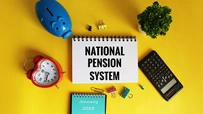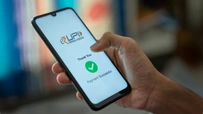Top 10 Tips to Protect Yourself from Digital Banking Frauds
Disclaimer: This blog is intended solely for awareness and informational purposes. It should not be considered as financial, legal, or professional advice.
October 04, 2025

According to the Reserve Bank of India (RBI), reported digital banking fraud cases in the financial sector rose from 13,564 in FY23 to 36,075 in FY24—an increase of more than 165% (RBI Annual Report 2023–24).
The National Crime Records Bureau (NCRB) also noted that cybercrime incidents, many linked to online banking, are steadily climbing year after year. In 2024, over ₹23,000 crore was lost to cyber and digital fraud in India. These numbers show that while online banking is safe when used correctly, lapses in security can be costly.
This blog highlights practical digital banking security tips to help you avoid online banking scams and secure your accounts.
Why Digital Banking Security Matters?
Unlike traditional fraud where transactions may take time to process, digital transactions happen instantly. Once money leaves your account through unauthorized access, it can be routed across multiple channels, making recovery nearly impossible.
RBI’s data shows that card and internet-based transactions account for the majority of reported banking frauds, with account takeover frauds making up around 56% of incidents. The sheer speed of digital channels is what makes prevention critical.
For individuals, security habits like strong passwords, regular monitoring, and device safety are the best defenses. For businesses, securing digital channels means not only protecting money but also safeguarding customer trust.
Common Types of Online Banking Scams to Avoid
Scammers rely on deception rather than complex hacking. By exploiting gaps in awareness, they convince users to share sensitive information or approve unauthorized transactions. The most common scams include:
1. Phishing Scams
Fraudsters send emails, SMS, or instant messages that look like official bank communication. These often carry urgent warnings—such as “account blocked” or “KYC update required”—and redirect users to fake websites designed to steal login credentials.
2. SIM Swap Fraud
In this method, criminals gain control of your mobile number by duplicating your SIM card. Once active, they can intercept OTPs or alerts, enabling unauthorized access to your online banking accounts.
3. UPI Request Scams
A rising threat in India, UPI scams involve fraudsters sending “collect request” notifications, tricking users into approving payments. Instead of receiving money, unsuspecting users end up transferring funds to the scammer.
4. Fake Banking Apps
Cybercriminals design malicious investment/banking apps that closely resemble official banking apps. When installed, these apps capture sensitive login details and sometimes even run malware in the background to extract additional data.
5. Social Engineering
Here, fraudsters impersonate bank officials, customer service agents, or even government authorities. They pressure users to disclose PINs, CVVs, or OTPs under the pretense of resolving urgent banking issues.
Staying informed about these scams is critical. Awareness, combined with strong digital banking security tips like transaction alerts and verified apps, significantly reduces the likelihood of falling victim to fraud.
10 Tips to Protect Yourself from Digital Banking Frauds
Tip 1: Use Strong, Unique Passwords
Never rely on predictable passwords like birthdays or names. Use a combination of letters, numbers, and symbols, and avoid reusing the same password across multiple accounts.
Tip 2: Enable Two-Factor Authentication (2FA)
Always activate 2FA on your digital accounts. OTPs, biometric verification, or authenticator apps add a second layer of protection against unauthorized access.
Tip 3: Stay Alert to Phishing Attempts
Phishing emails and SMS often mimic banks to trick you. To avoid online banking scams, ignore suspicious links and verify messages with your bank directly.
Tip 4: Download Only Verified Banking Apps
Only install apps from official app stores. Fake apps are a common tool in digital banking fraud, designed to capture login details.
Tip 5: Monitor Transactions Frequently
Check your account regularly and enable transaction alerts. Early detection of unauthorized activity allows faster reporting and minimizes losses.
Tip 6: Secure Your Devices
Keep your phone and computer updated with the latest software. Install antivirus tools and lock devices with biometrics or strong passcodes to block unauthorized access.
Tip 7: Avoid Public Wi-Fi for Transactions
Unsecured Wi-Fi networks can be intercepted by hackers. Use mobile data or a trusted private connection when accessing online banking services.
Tip 8: Never Share OTP, PIN, or CVV
Banks never ask for these details via calls, SMS, or emails. Sharing them directly exposes you to digital banking fraud.
Tip 9: Set Transaction Limits and Alerts
Add withdrawal and spending caps on accounts and cards. Enable alerts for all debits to detect suspicious activity immediately.
Tip 10: Report Suspicious Activity Immediately
If you notice unauthorized transactions, contact your bank without delay. Prompt reporting can block further misuse and increase chances of recovery.
Final Thoughts
The rise of digital banking fraud highlights the urgent need for vigilance. From phishing to SIM swaps, fraudsters exploit carelessness more than technology itself. By applying the right precautions—strong passwords, 2FA, verified apps, transaction monitoring, and swift reporting—you can greatly reduce risks.
Digital banking remains safe and highly convenient, provided users adopt disciplined practices. These tips to protect from digital banking frauds are not one-time actions but habits that need consistency. With awareness and the right tools, individuals and businesses can continue to enjoy the benefits of online banking while keeping their money secure.
Disclaimer:
The contents herein are only for informational purposes and generic in nature. The content does not amount to an offer, invitation or solicitation of any kind to buy or sell, and are not intended to create any legal rights or obligations. This information is subject to updation, completion, amendment and verification without notice. The contents herein are also subject to other product-specific terms and conditions, as well as any applicable third-party terms and conditions, for which Ujjivan Small Finance Bank assumes no responsibility or liability.
Nothing contained herein is intended to constitute financial, investment, legal, tax, or any other professional advice or opinion. Please obtain professional advice before making investment or any other decisions. Any investment decisions that may be made by the you shall be at your own sole discretion, independent analysis and evaluation of the risks involved. The use of any information set out in this document is entirely at the user’s own risk. Ujjivan Small Finance Bank Limited makes no representation or warranty, express or implied, as to the accuracy and completeness for any information herein. The Bank disclaims any and all liability for any loss or damage (direct, indirect, consequential, or otherwise) incurred by you due to use of or due to investment, product application decisions made by you on the basis of the contents herein. While the information is prepared in good faith from sources deemed reliable (including public sources), the Bank disclaims any liability with respect to accuracy of information or any error or omission or any loss or damage incurred by anyone in reliance on the contents herein, in any manner whatsoever.
To know more about Ujjivan Small Finance Bank Products Visit:"https://www.ujjivansfb.in"
All intellectual property rights, including copyrights, trademarks, and other proprietary rights, pertaining to the content and materials displayed herein, belong
to Ujjivan Small Finance Bank Limited or its licensors. Unauthorised use or misuse of any intellectual property, or other content displayed herein is strictly prohibited and the same is not intended for distribution to, or use by, any person in any jurisdiction where such distribution or use would (by reason of that person’s nationality, residence or otherwise) be contrary to law or registration or would subject Ujjivan Small Finance Bank Limited or its affiliates to any licensing or registration requirements.
FAQs
1. What is the most common type of digital banking fraud?
Phishing remains the most reported fraud, where users are tricked into revealing sensitive credentials through fake emails or SMS.
2. How can I avoid online banking scams while using UPI?
Always verify UPI requests before approving. Never accept “collect” requests from unknown numbers.
3. Are banking apps safe for high-value transactions?
Yes, official banking apps are safe when downloaded from trusted app stores and used with 2FA and biometric security.
4. What are some digital banking security tips for senior citizens?
Encourage them to enable transaction alerts, use biometric logins, and avoid clicking on suspicious links or sharing details over calls.
5. What should I do first if I suspect fraud?
Immediately contact your bank’s official helpline, block your card or account access, and file a complaint with the cybercrime portal.








